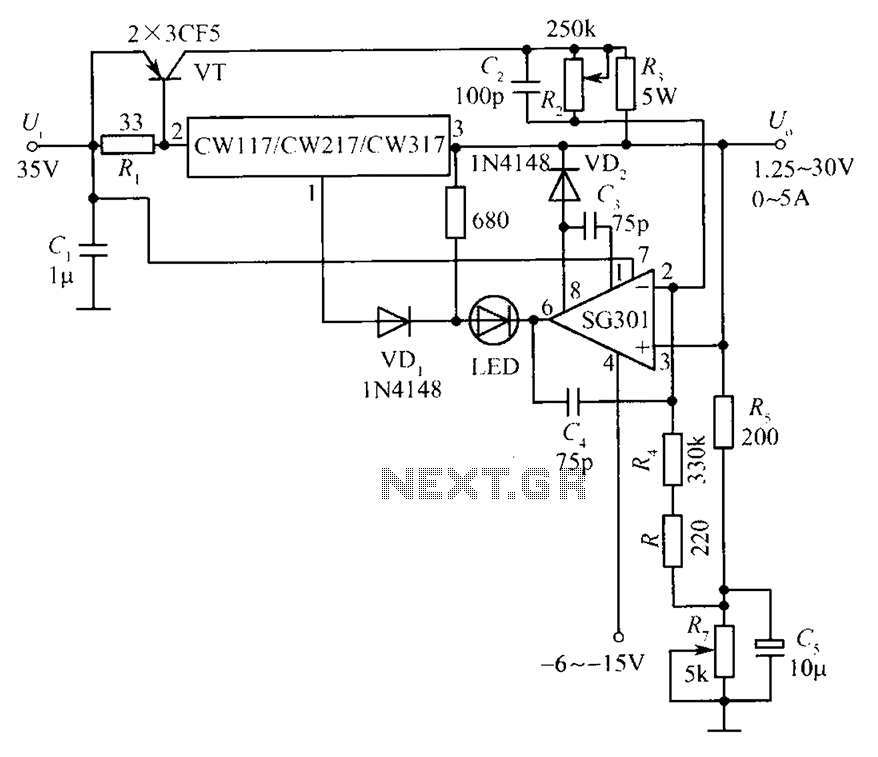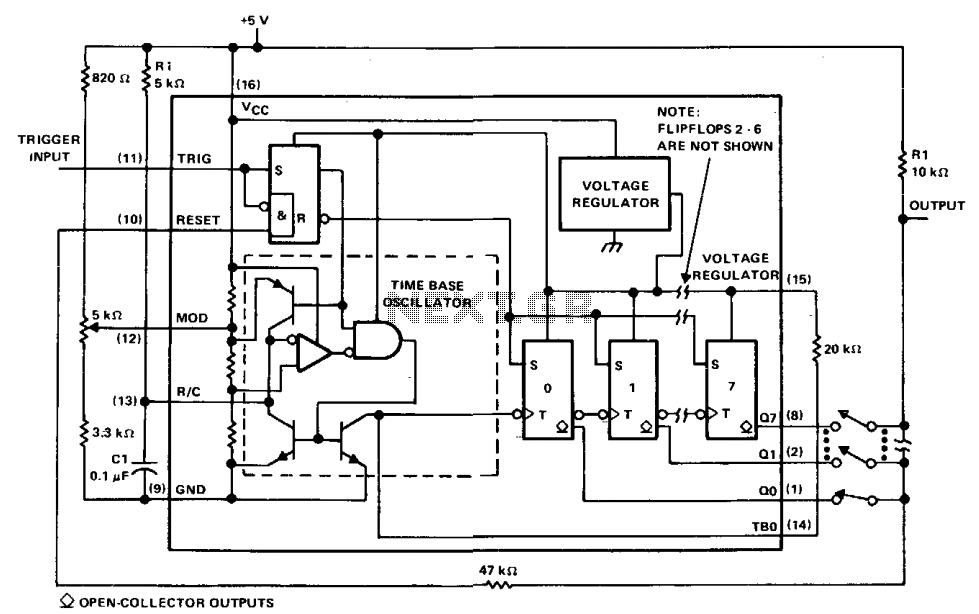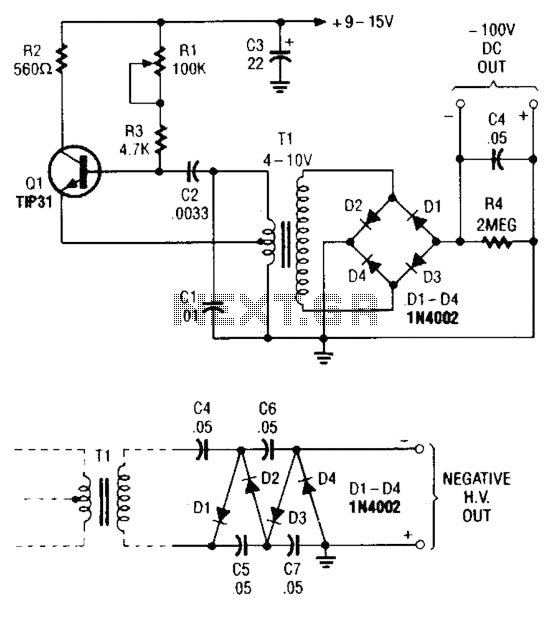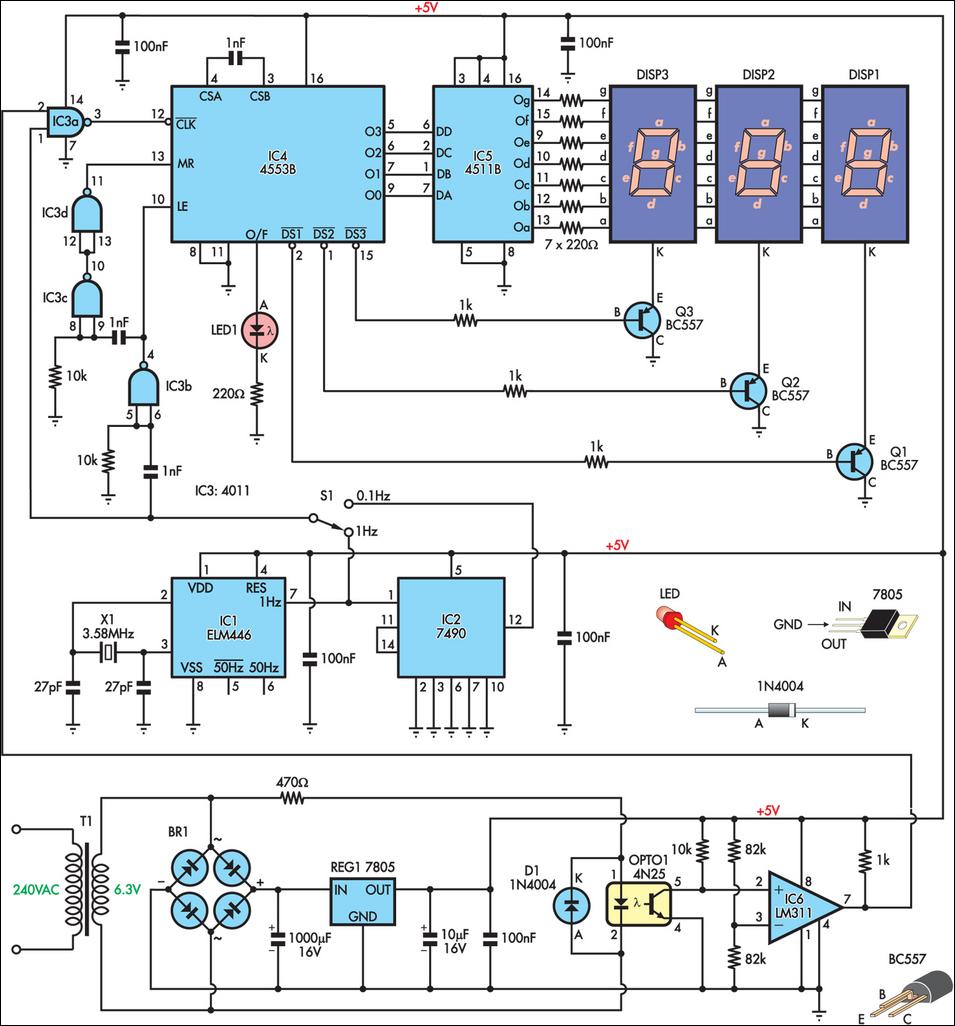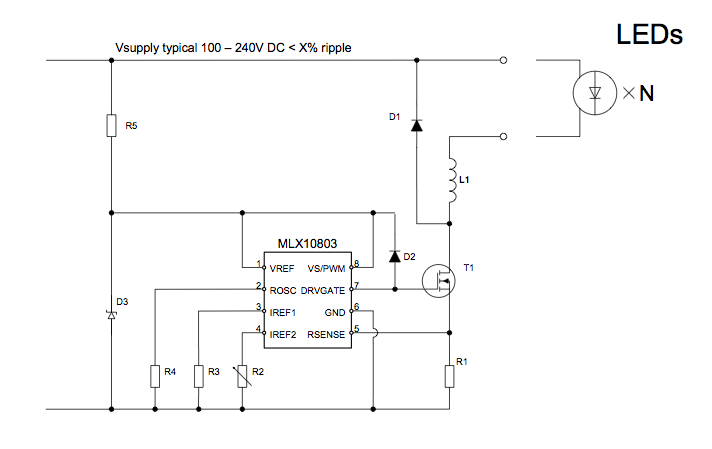
5 volt ttl voltage monitor
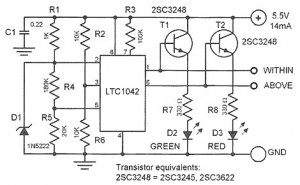
This device is designed to control a supply voltage of +5 V. It provides information signals at TTL levels, accompanied by an LED display that indicates whether the voltage is within the nominal value or deviates from it. The device is housed in a box. The core component of the device is a low-current window comparator IC, the LTC1042 from Linear Technology. The reference voltage is set at 2.5 V ± 0.005 V for the middle window, which is established by zener diode D1 and connected to pin 2 of the comparator. The width of this window is 20% (± 10%) of the reference voltage, which is set using a resistor divider consisting of R4 and R5. The controlled voltage is divided by two resistors, R2 and R6, and fed to pin 3 of the IC. The voltages at terminals 2 and 3 are compared to determine the deviation (10%, output 5). The green LED D2 lights up when the voltage is within the desired range, while the red LED D3 activates when the voltage is out of range.
The described device serves as a voltage monitoring and control system, utilizing a low-current window comparator to ensure that the supply voltage remains stable at +5 V. The LTC1042 comparator is pivotal in this application, as it compares the monitored voltage against a precise reference voltage derived from a zener diode. The choice of a 2.5 V reference allows for a symmetrical window around this value, facilitating effective monitoring of voltage deviations.
The window comparator operates by defining a voltage range that the monitored signal must stay within. The reference voltage is established by the zener diode D1, which provides a stable voltage source. The voltage window is determined by the resistor divider formed by R4 and R5, ensuring that the comparator can detect slight variations in the input voltage. The resistor network formed by R2 and R6 scales the monitored voltage down to a level compatible with the comparator's input range, allowing for accurate comparisons.
The output of the comparator is connected to indicator LEDs. The green LED D2 signifies that the monitored voltage is within the acceptable range, providing a visual confirmation of normal operation. Conversely, the red LED D3 serves as an alert, illuminating when the voltage strays outside the defined limits, thereby enabling immediate corrective actions.
Overall, this voltage monitoring device is essential for applications requiring precise voltage regulation and monitoring, ensuring that the system operates within specified parameters. The use of TTL signal levels for output makes it suitable for integration with digital systems, enhancing its utility in various electronic applications.This is a simple device designed to control supply voltage +5 V Monitor provides information signals TTL level, accompanied by the LED display, indicating that stress or deviated from the nominal value, or vice versa, is in a box . The basis of the device is a low-current window comparator IC LTC1042 company Linear Technology. The reference vol tage is 2. 5 V ± 0. 005 V for the middle window created by zener D1 and fed to pin 2 comparator. The width of this window equal to 20% ( ± 10%) of the reference voltage established at pin 5 chip divider R4, R5. The controlled voltage is divided by two resistors R2 and R6, and fed to pin 3 of the chip. Voltage at the terminals 2 and 3 are compared with the established view of the deviation (10%, output 5).
The green LED D2 is illuminated when the voltage is within the desired range. If the voltage is out of range, red LED D3. 🔗 External reference
The described device serves as a voltage monitoring and control system, utilizing a low-current window comparator to ensure that the supply voltage remains stable at +5 V. The LTC1042 comparator is pivotal in this application, as it compares the monitored voltage against a precise reference voltage derived from a zener diode. The choice of a 2.5 V reference allows for a symmetrical window around this value, facilitating effective monitoring of voltage deviations.
The window comparator operates by defining a voltage range that the monitored signal must stay within. The reference voltage is established by the zener diode D1, which provides a stable voltage source. The voltage window is determined by the resistor divider formed by R4 and R5, ensuring that the comparator can detect slight variations in the input voltage. The resistor network formed by R2 and R6 scales the monitored voltage down to a level compatible with the comparator's input range, allowing for accurate comparisons.
The output of the comparator is connected to indicator LEDs. The green LED D2 signifies that the monitored voltage is within the acceptable range, providing a visual confirmation of normal operation. Conversely, the red LED D3 serves as an alert, illuminating when the voltage strays outside the defined limits, thereby enabling immediate corrective actions.
Overall, this voltage monitoring device is essential for applications requiring precise voltage regulation and monitoring, ensuring that the system operates within specified parameters. The use of TTL signal levels for output makes it suitable for integration with digital systems, enhancing its utility in various electronic applications.This is a simple device designed to control supply voltage +5 V Monitor provides information signals TTL level, accompanied by the LED display, indicating that stress or deviated from the nominal value, or vice versa, is in a box . The basis of the device is a low-current window comparator IC LTC1042 company Linear Technology. The reference vol tage is 2. 5 V ± 0. 005 V for the middle window created by zener D1 and fed to pin 2 comparator. The width of this window equal to 20% ( ± 10%) of the reference voltage established at pin 5 chip divider R4, R5. The controlled voltage is divided by two resistors R2 and R6, and fed to pin 3 of the chip. Voltage at the terminals 2 and 3 are compared with the established view of the deviation (10%, output 5).
The green LED D2 is illuminated when the voltage is within the desired range. If the voltage is out of range, red LED D3. 🔗 External reference
